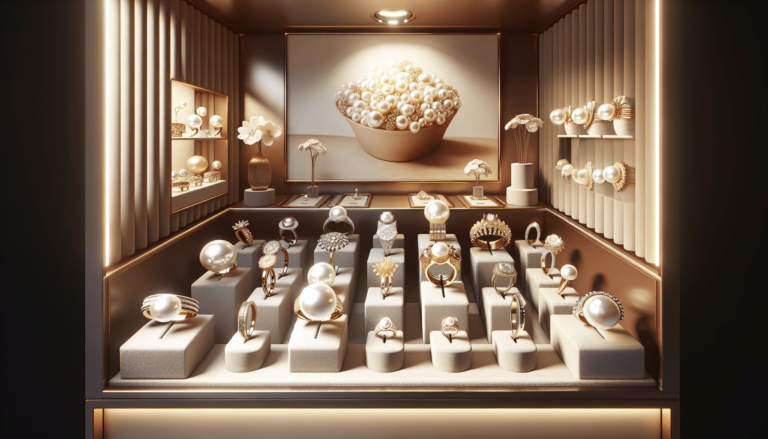In this comprehensive guide, you will discover all the essential factors to consider when determining the quality of a pearl ring. From the luster and surface perfection to the size and color, each of these indicators will help you make an informed decision when selecting the perfect pearl ring. Whether you are a seasoned jewelry enthusiast or just beginning your collection, this guide will provide you with valuable insights into evaluating pearl ring quality. So, get ready to embark on an exciting journey as you explore the world of pearls and uncover the secrets behind their exquisite beauty.
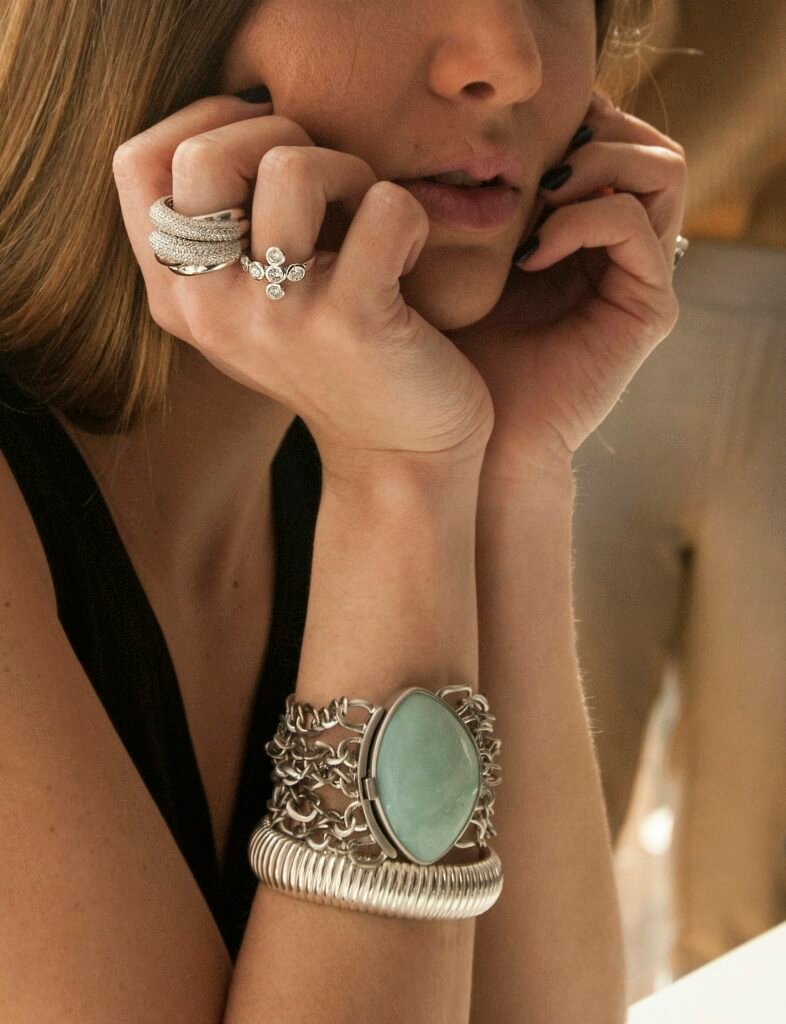
Find more products like these on Amazon!
Pearl Quality Grading
Introduction to Pearl Grading
When it comes to choosing a high-quality pearl ring, understanding the grading system is essential. Pearl grading is a standardized process that assesses the overall quality of pearls based on various factors such as luster, surface quality, size, shape, color, nacre thickness, and origin. By familiarizing yourself with pearl grading, you can make an informed decision and select a pearl ring that meets your expectations.
Factors Affecting Pearl Quality
Several factors contribute to the overall quality of pearls. Luster, one of the most important aspects, refers to the shine and brilliance of the pearl’s surface. Other significant factors include surface quality, which refers to the presence of imperfections, size and shape, color and overtone, nacre thickness, and the pearl’s origin. Each of these factors plays a crucial role in determining the quality and value of a pearl.
Types of Pearl Grading Systems
There are several grading systems used to assess pearl quality, but two of the most widely recognized ones are the AAA-A grading system and the A-D grading system. The AAA-A grading system evaluates pearls based on luster, surface quality, shape, color, and size. On the other hand, the A-D grading system focuses on luster, surface quality, and shape. Both systems provide consumers with a clear understanding of the quality and value of pearls.
Popular Pearl Quality Grades
When it comes to pearl grading, various grades are used to categorize pearls based on their quality. For example, AAA grade pearls are considered to be of the highest quality, exhibiting excellent luster, minimal surface imperfections, and uniform shape and size. AA and A grade pearls are of good quality but may have slight variations in luster, surface imperfections, or shape. Understanding these grading categories will help you choose a pearl ring that meets your desired quality standards.
Pearl Types and Varieties
Types of Pearls
There are numerous types of pearls available, each with its own unique characteristics. Cultured pearls, which are the most common, are produced by pearl farmers through a process that involves inserting a nucleus into an oyster or mollusk. Freshwater pearls are another popular type, grown in freshwater lakes and rivers. Akoya pearls, Tahitian pearls, and South Sea pearls are other well-known types, each with its own distinct qualities.
Varieties within Pearl Types
Within each pearl type, there are different varieties that offer variations in color, size, shape, and luster. For example, within the cultured pearl category, you can find Akoya cultured pearls, which are known for their high luster and classic white color. Tahitian pearls, on the other hand, are cherished for their dark colors, often ranging from charcoal gray to black. Within freshwater pearls, you can find a wide range of sizes, shapes, and colors, making them a versatile option for pearl rings.
Characteristics of Different Pearl Varieties
Each pearl variety possesses unique characteristics that make it distinct. For example, Akoya pearls are known for their round shape, high luster, and reflective surface. Tahitian pearls, on the other hand, are prized for their large sizes, dark natural colors, and exotic overtones. Freshwater pearls are available in a wide range of colors, shapes, and sizes, making them a popular choice for those seeking versatility and affordability.
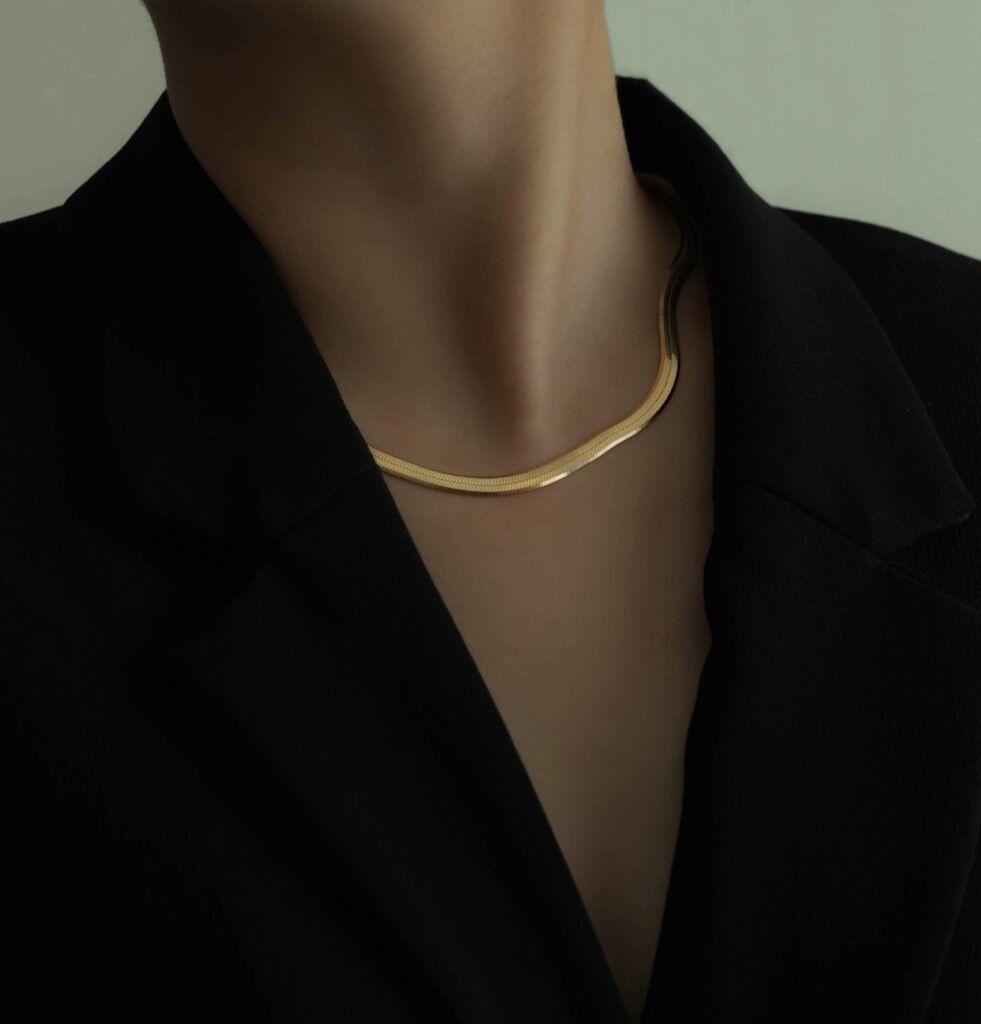
Find more products like these on Amazon!
Lustre and Reflection
Importance of Lustre in Pearls
Lustre is an essential quality indicator in pearls. It refers to the surface brilliance and glow that results from light reflecting off the layers of nacre. High-quality pearls display a strong, reflective lustre that enhances their overall beauty. Lustre is considered one of the most critical factors in determining a pearl’s quality and value, as it directly contributes to the visual appeal of the pearl.
Assessing Pearls’ Lustre
To evaluate a pearl’s lustre, you should examine its surface under various lighting conditions. High-quality pearls will exhibit a bright, mirror-like shine, while lower quality pearls may appear dull or lackluster. The lustre should appear even across the entire surface of the pearl, without any noticeable blemishes, spots, or discoloration.
Different Reflection Types
Pearls can have different types of reflections depending on their nacre thickness and surface quality. Metallic reflections, for example, appear as bright, mirror-like reflections on the pearl’s surface. Additionally, pearls can display various overtones, which are secondary colors that appear on the pearl surface. Common overtones include rose, blue, green, and silver. Each reflection type adds to the unique beauty and character of the pearl.
Significance of Reflection in Pearl Rings
The reflection of a pearl greatly enhances the overall beauty and visual impact of a pearl ring. Pearls with a strong, reflective lustre and appealing reflections will catch the light and draw attention, making them an excellent choice for eye-catching and elegant jewelry. When selecting a pearl ring, consider the reflection type and how it complements the ring’s design and accentuates your personal style.
Surface Quality
Impact of Surface Quality on Pearl Rings
The surface quality of a pearl is a crucial factor that contributes to its overall quality and value. Surface imperfections, such as blemishes, marks, scratches, or irregularities, can affect a pearl’s appearance and durability. A pearl with a smooth, flawless surface is considered of higher quality compared to one with noticeable imperfections. It is important to carefully assess the surface quality of a pearl before selecting it for a ring.
Identifying Surface Imperfections
To identify surface imperfections, closely inspect the pearl under bright light. Look for any visible spots, scratches, cracks, or irregularities on the pearl’s surface. Keep in mind that no pearl is entirely flawless, as natural pearls tend to have minor surface imperfections. However, pearls with fewer and less noticeable imperfections are generally considered of higher quality.
Grades of Surface Quality
Surface quality is often graded on a scale from A to D, with A representing the highest quality. A-grade pearls have a smooth surface with minor imperfections that are difficult to detect without close examination. B-grade pearls may have more noticeable imperfections, while C-grade pearls have visible flaws that can impact their appearance. D-grade pearls, which are the lowest quality, often have significant surface imperfections.
Considerations for Surface Quality
When choosing a pearl for a ring, consider the intended use and personal preferences regarding surface quality. If you prioritize a more flawless appearance, opt for pearls with a higher surface quality grade. However, if you prefer a more organic and unique look, pearls with slight imperfections may offer a more natural and authentic charm. Ultimately, the decision should be based on your personal taste and desired aesthetic.
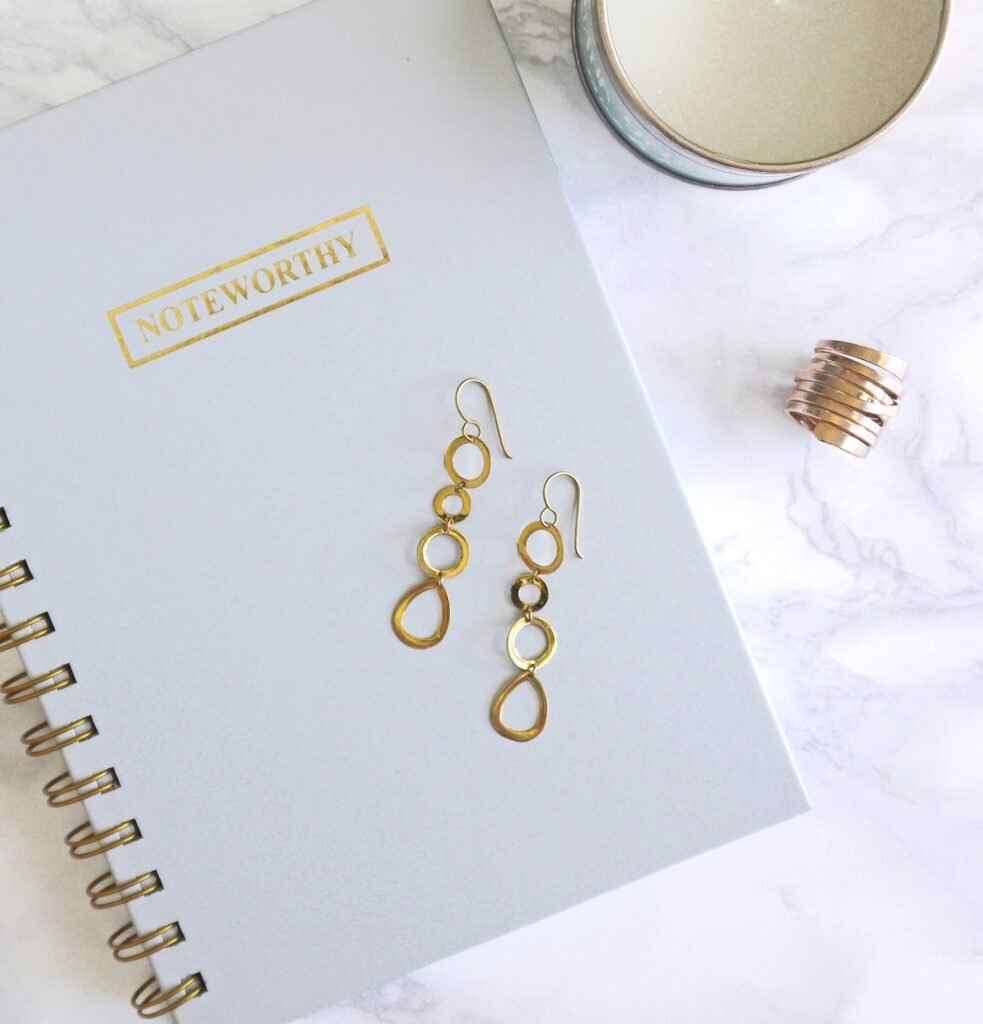
Size and Shape
Determining the Ideal Size for Pearl Rings
The size of a pearl greatly influences its appearance and how it complements a ring design. Pearl sizes typically range from small seed pearls of a few millimeters to larger pearls measuring over 20 millimeters in diameter. Consider your personal style, hand size, and the overall design of the ring when selecting the size of the pearl. Smaller pearls tend to lend themselves well to delicate and dainty designs, while larger pearls can make a bold statement.
Popular Shapes for Pearl Rings
Pearls come in a variety of shapes, each offering its own unique beauty. The most common shapes for pearl rings are round, button, oval, drop, and baroque. Round pearls, particularly perfectly spherical ones, are highly sought after for their classic elegance. Button pearls are flattened on one side, offering a unique and modern look. Oval pearls provide a versatile and elongating effect, while drop pearls offer graceful and feminine appeal. Baroque pearls, with their irregular shapes, add a touch of artistic and unconventional beauty to a ring.
Choosing the Right Size and Shape
When choosing the size and shape of a pearl for a ring, consider your personal style and the occasion for which the ring will be worn. A smaller, round pearl can be a timeless and versatile choice that suits both formal and casual settings. If you prefer a more distinct and unconventional look, consider a larger, baroque pearl or a unique shape like drop or button. Remember that the size and shape of the pearl should harmonize with both your personal aesthetic and the overall design of the ring.
Color and Overtone
Understanding the Role of Color in Pearl Quality
The color of a pearl is an essential quality indicator, contributing to its overall beauty and desirability. Pearls can come in a wide range of colors, including white, cream, pink, silver, gold, black, green, and blue, among others. Additionally, pearls can have overtones, which are secondary colors that appear on the pearl’s surface. Color plays a significant role in determining the overall aesthetic and value of a pearl.
Assessing Color and Overtone in Pearl Rings
To assess the color and overtone of a pearl, observe it under natural light. High-quality pearls will exhibit a pure, rich, and even color throughout their surface. The overtone should complement the primary color and add depth and dimension to the pearl’s appearance. Look for pearls with vibrant, attractive colors and overtones that enhance their visual impact and beauty.
Significance of Color in Pearl Jewelry
The color of a pearl greatly impacts the overall look and feel of a pearl ring. White and cream-colored pearls offer a classic and timeless elegance. Pink and lavender pearls add a touch of femininity and romance, while silver and blue hues evoke a sense of sophistication and refinement. Black pearls can bring a bold and dramatic element to a ring, while golden and colored pearls offer a unique and vibrant alternative. Consider your personal style and the message you want your pearl ring to convey when choosing the color and overtone of the pearl.
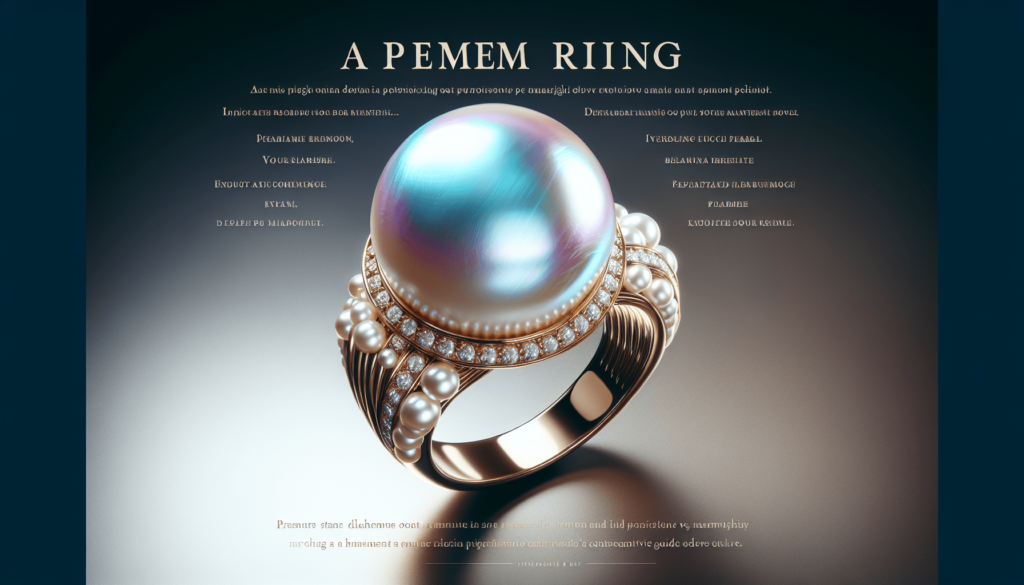
Nacre Thickness
Importance of Nacre Thickness
Nacre thickness refers to the layer of mother-of-pearl that is naturally deposited by the oyster or mollusk on the inner surface of the shell, which eventually forms the pearl. Thicker nacre generally indicates a higher-quality pearl, as it provides durability, longevity, and a more radiant appearance. Thin nacre can lead to a lower-quality pearl that may lack luster and durability.
Determining Nacre Thickness in Pearl Rings
Determining the nacre thickness in a pearl can be challenging without specialized equipment. However, reputable jewelers and pearl experts can provide insight into the nacre thickness of a particular pearl or pearl variety. It is advisable to seek guidance from experienced professionals when evaluating the nacre thickness of a pearl for a ring, particularly if it is a significant investment.
Optimal Nacre Thickness for Durability
For pearl rings intended for everyday wear, it is important to select pearls with optimal nacre thickness to ensure durability and longevity. Pearls with thicker nacre are less likely to chip, peel, or become damaged over time. While thin-nacred pearls can still be beautiful, they may require more delicate care and should be reserved for special occasions or pieces of jewelry that are worn less frequently.
Setting and Mounting
Impact of Setting on Pearl Ring Quality
The setting and mounting of a pearl ring play a significant role in ensuring the longevity, security, and overall appearance of the pearl. The setting refers to how the pearl is held in place within the ring, while the mounting refers to the metal framework that holds the pearl and any additional gemstones. A well-designed and properly executed setting and mounting will enhance the beauty and overall quality of the pearl ring.
Types of Settings for Pearl Rings
There are various types of settings commonly used for pearl rings, each offering its own advantages and aesthetic appeal. Some popular settings include prong settings, bezel settings, halo settings, and tension settings. Prong settings use metal claws to hold the pearl securely in place, allowing maximum exposure of its surface. Bezel settings, on the other hand, encase the pearl in a metal rim, providing added protection. Halo settings surround the pearl with a circle of smaller gemstones, creating a dazzling and eye-catching effect. Tension settings use the pressure from the metal band to secure the pearl, giving the illusion of the pearl floating on the finger.
Choosing the Right Mounting
When selecting a mounting for a pearl ring, it is important to consider both aesthetic and practical factors. Choose a setting that suits your personal style and complements the overall design of the ring. Additionally, consider the metal type, such as gold or platinum, based on your preferences and budget. It is also crucial to ensure that the mounting adequately secures the pearl while allowing sufficient light to enhance its luster and brilliance.

Pearl Origin
Significance of Pearl Origin
The origin of a pearl refers to the geographic location where it was cultivated. Pearl origin can significantly impact the value, desirability, and quality of a pearl. Some pearl origins are famous for producing pearls of exceptional beauty and rarity, while others may have unique characteristics that appeal to a specific aesthetic preference.
Notable Pearl Origins
Several regions around the world are renowned for producing high-quality pearls. Some notable origins include the Akoya pearls from Japan, known for their exquisite luster and round shape. Tahitian pearls, native to French Polynesia, are highly sought after for their dark colors and remarkable overtones. Australian South Sea pearls are prized for their large sizes and radiant luster. Freshwater pearls, which are cultured in various countries, including China and the United States, offer a wide range of colors, shapes, and sizes.
Quality Factors based on Pearl Origin
Different pearl origins are associated with specific quality factors. For example, Japanese Akoya pearls are known for their exceptional luster and high surface quality. Tahitian pearls are celebrated for their unique and vibrant colors, while Australian South Sea pearls are admired for their size, luster, and natural beauty. Freshwater pearls offer affordable options and a diverse range of shapes and colors. Considering the origin of a pearl can provide valuable insights into its expected quality and characteristics.
Price and Budget Considerations
Factors Influencing Pearl Ring Prices
Several factors influence the price of a pearl ring. The quality of the pearl, including factors like luster, surface quality, size, shape, color, and nacre thickness, plays a significant role in the pricing. The rarity of the pearl type, its origin, and the overall craftsmanship and design of the ring also contribute to the price. Additionally, market demand and fluctuations, as well as the reputation and credibility of the jeweler, can impact the cost of a pearl ring.
Determining Your Budget
Before purchasing a pearl ring, it is important to establish a budget that aligns with your financial considerations. Evaluate your priorities and determine the maximum amount you are comfortable spending on the ring. Consider the significance of the occasion, the intended frequency of wear, and your personal preferences when setting your budget. Keep in mind that while high-quality pearls may come at a higher price, there are options available across a range of budgets.
Balancing Quality and Cost
When selecting a pearl ring, strike a balance between quality and cost that aligns with your preferences and budget. It may be tempting to prioritize one aspect over the other, but finding the right balance ensures that you make a wise investment. Consider the factors that are most important to you, such as luster or size, and allocate your budget accordingly. Remember that a well-chosen pearl ring that meets your desired quality standards will bring joy and beauty for years to come.


